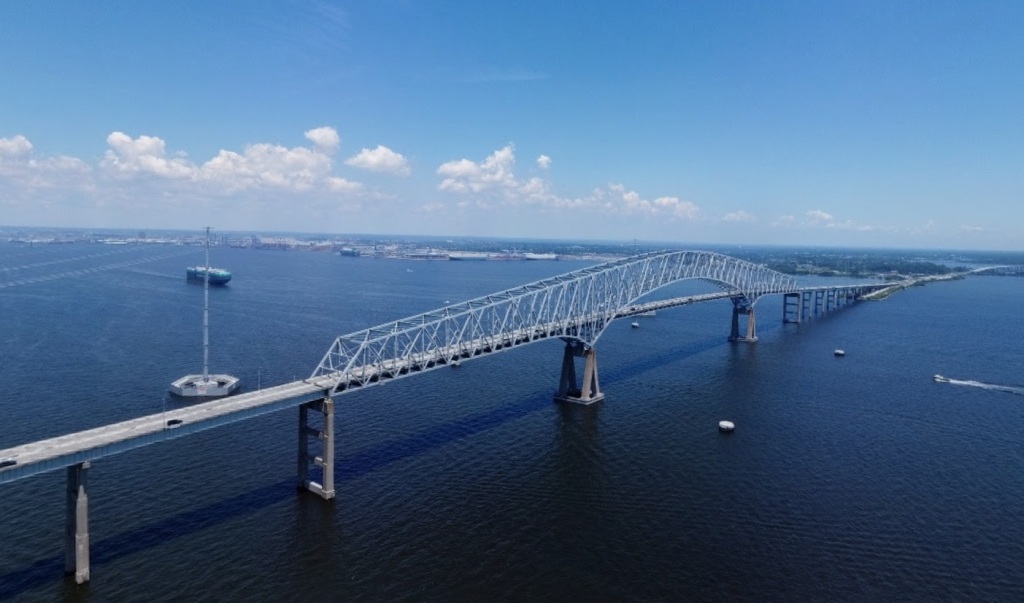I don’t often write topical stuff, but the collapse of the Francis Scott Key bridge in Baltimore has been a bit of an eye opener. Most importantly I should say that as I write this, the search is still on for at least six people who are listed as missing. Quite rightly, work in and around the bridge right now is concentrated on that. I hope that there is a positive outcome for them and their families.
At the other end of the scale has been the absolutely crazy speculation about the cause of the collapse. Some people on Twitter were categorically stating that this was a terrorist incident, and they knew because they have special sources of information, which is about as crazy as you can get. If I was a terrorist I could think of a whole lot of easier ways to cause a major event that wouldn’t involve crashing a container ship into a bridge at 1.30am. Then there were the many speculators claiming the captain and crew of the ship had all collapsed as a result of taking the COVID vaccine. Never mind that the COVID vaccine is about as safe as a vaccine can be, but the ship was under the command of a pilot at the time. I honestly don’t know if these lunatics believe this stuff or they’re just stirring things up, either way it indicates just how messed up people can be.
In reality, of course, it looks like the ship had a power failure and lost its ability to steer, or to take any other evasive action. The crew did get a Mayday message sent, so they were aware of what was likely to happen, but in the event, the ship did hit one of the two main supporting bridge piers, brought it down, and the rest of the bridge with it. It looks most likely to have been a dreadful accident, as these things usually are.
The catastrophic collapse, though, does raise some interesting questions about single points of failure and business continuity. Obviously it’s very easy to be wise after the event, but when stuff like this happens, all those weaknesses come to the fore.
That bridge and its supporting piers did look very flimsy given that one ship was able to demolish the whole structure. There didn’t seem to be much in the way of measures to protect the piers from possible collisions, which is a bit worrying. There are a lot of similar bridges in North America and I can imagine that there are many engineers currently looking at points of failure, and what they can do to mitigate the issue without rebuilding the whole structure. It’s fair to say that ships of this size were not anticipated when the Key bridge was designed and built, but not building some barrier to protect the piers seems to have been a bit shortsighted now. I’m absolutely certain that other ports with similar points of failure will rapidly be instituting a system of bringing large ships in under tow, or at least escorted by a couple of tugboats as well as the pilot. When the channel is cleared and the bridge rebuilt, as it will be, you can guarantee that the design will address this and other systemic weaknesses.
Beyond the immediate disaster is, of course, the fact that the Port of Baltimore is going to be out of action for quite a while. There’s been much talk of people having to drive trucks and cars on a long detour now that the bridge is out, but what of the trade within the port, and the ships that are currently the wrong side of the collapsed bridge? Ships outside of the port can (probably) go elsewhere for now, but the money tied up in the vessels there, and the port facilities that will be largely idle, are going to cost people and businesses dearly. It sounds like the US Government is going to help them, but what had they done to protect themselves from just such a disaster? You’d like to think that they all have business continuity plans, but as they cost money to implement and affect today’s bottom line, such planning is often not undertaken and everyone trusts to crossed fingers.
There will be lessons learned here. Future builds of port infrastructure will have resilience built in, and existing builds will most likely be improved. The recent blockage of the Suez Canal after a ship was wedged across the channel showed the importance of the continued improvement of that seaway, making it “two lane” along much of its length. Forward planning seems to have been applied for the new bridge across the Detroit River, thank goodness, as its piers have been built on each bank and not in the river itself, something that I’m certain was part of the design brief to minimize the likelihood of ship collisions. What has to be done overall, though, is to recognize the value of contingency planning, even where it costs a lot to implement. One catastrophic even can cost far more than some forward planning costs.

